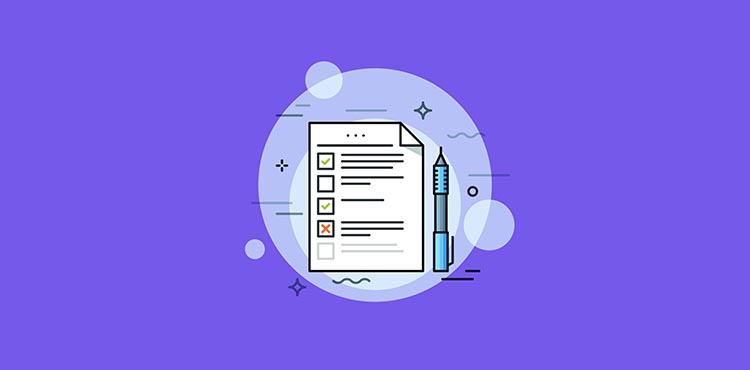Leaders across organisations, strive to keep their employees engaged at the workplace to achieve higher levels of productivity. So if you are a decision maker who is striving to do the same but facing difficulties, then you’re not alone!
In this article, we will walk you through some foolproof steps that will help you launch an effective employee engagement program. The article will also provide you with some tips that will aid in employee satisfaction and retention.
What do the statistics suggest?
Various studies have established that employee engagement directly correlates with the productivity level of employees in an organisation. Actively engaged employees create a healthy work environment, deliver results better, and stay committed to their work.
However, a recent Gallup poll reported that only 32% of respondents feel actively engaged in their jobs, while over 50% are not engaged, and 17% feel disengaged.
Despite companies increasingly practising employee engagement programs, these results paint a dim picture, which is in contrast to an image of healthy, happy, and productive employees. This clearly shows there is a flaw in the system that renders engagement at workplace ineffective.
Here is a seven-step guide to run employee engagement programs that help your company touch a higher pedestal of productivity and quality.
Begin at the on-boarding process
Usually, organisations put their engagement programs into action much after the employee on-boarding process. But in reality, it is important for your newly hired employees to know and engage with your firm.
Here is where an employee handbook comes to help. It has all the information on your company’s policies, vision, and mission, business processes followed, etc., in place. It is detailed, accurate, and highlights an employee’s roles and responsibilities. This helps employees get acquainted with your company and blend in well, in a short period of time.

Your employees get a better understanding of history, goals, and major achievements of your firm when they have a smart employee handbook right on their smartphones. This helps to cut down their on-boarding time and motivates them to work zealously towards achieving your goals.
Conduct unbiased surveys regularly
Conducting surveys is important to understand employee needs. But, many times, these surveys provide results that HR executives actually want to see instead of the true picture. To get a transparent picture, don’t just include questions that need checking the box with a ‘yes’ or a ‘no’.
Ask questions like “How do you feel about your role in the organisation?”, “What would be the one thing that you would like to change about your job?”, “How satisfied are you with your work-life?”, etc.
Remember, surveys aren’t a one-time activity. As with all people development activities, they should be conducted at regular intervals, say, monthly or quarterly, to get consistent insights. You can even keep your surveys anonymous for better insights.
Let your employees know that you care
Your job doesn’t end with conducting surveys. Here’s where the real game begins. If you identify an issue, then you need to work upon it. Employees feel engaged at the workspace when they know their opinions and suggestions are heard and implemented.
Set up informal meetings or dinners on weekends to discuss and resolve issues with your team. This will not only help your teams bond better but also inculcate a sense of belonging among them.
Experiment with new solutions
Before finding solutions to implement changes in your organisation, it’s important to test the changes first and then measure the outcome. Your company might have to carry out hit and trial to figure out what works best for your employees. This might be a lot of work, but the engagement benefits will make it worthwhile in the end.
Google recommends, “Treat HR interventions like a medical researcher treats a drug trial: have a treatment group and an equivalent control group, hypotheses, a data collection period, an analysis comparing groups, and quantifiable outcomes.”
Make training a fun experience
Training sessions are an integral part of employee engagement programs. But traditional training sessions may sometimes become mundane manager-led exercises.
On the other hand, modern training methods like online training & development programs keep flexibility at hand and boredom at bay. Design training programs to suit the learning styles of your employees and set scores and benchmarks. Allow them to share their scores with peers. This will keep them excited about learning.
Link engagement programs to a social cause
The millennial generation is characterised as young, vibrant, technologically-equipped personalities wanting to work for a greater good. Therefore, it is always best to use your engagement program to address a social issue. This acts as a good employee retention strategy.
Choose an issue that resonates best with your organisation’s core values and encourages employees to volunteer for it. For example, if your firm dedicates itself to make animal cruelty-free products, you can form a club or a committee that aims at rescuing stray dogs and providing them with a dog shelter.
Fix a day in a week or every alternate week where all employees need to wear the same T-shirts with the logo of your club and go about in town, rescuing dogs. Who wouldn’t love that?
Create a good knowledge sharing system
Your employees are likely to be more engaged and committed to your organisation if they have access to complete information. It is a fact at all workplaces that employees want to be in their firm’s circle of trust.
Because of this, HR documentation tools are increasingly adopted by companies. They help in creating a robust web-based HR document that comprises full information about employees, company policies, leave related and other important policies, etc.
It gives a clear view of all the information concerning a firm at one place, thereby eliminating the need to dig through loads of paperwork.
These are the seven steps to start an effective employee engagement program. This will help you attain new levels of commitment and productivity in your company.

Image: Unsplash
Here are seven more quick ideas to create effective employee engagement…
Praise your employees, even for small wins
Appreciate your employees even for the smallest task they had achieved. Don’t just confine it to business but extend it to personal lives as well. For instance, congratulate your employee for a new car or a new house that he/she bought.
Devote a place to unwind
Make sure your office has an area specifically devoted for employees to unwind and chill. After all, taking a break from mechanical routine life is essential to feel relaxed. This way your employees will be able to recharge themselves and be more productive than before.
Plan weekend dinners and trips
Anything that creates a bond among people is likely to increase their engagement. Weekend dinners and day trips are a great way to form friendships outside the workplace.
Emphasise on work-life balance
Finding a balance between work and life is one of the biggest struggles for your employees. Speak to your team on ways to enhance it and incorporate flexible work hours, vacations, etc. to increase engagement.
Keep them motivated
Motivated employees will always outperform the unmotivated lot. Find ways to keep your employees charged to create and maintain synergy at the workplace. Schedule seminars with a motivational speaker put up positive quotes in your office, felicitate employee performance by announcing the best employees of the year, etc.
Empathise with your employees
Your employees should be like your extended family. Understand their grievances like you would understand that of a family member and work towards addressing them quickly.
Give them responsibility
One of the best ways to engage employees is by giving them responsibility instead of burdening them with tasks. Employees are devoted to working when they are given real responsibility.
In Summary
Knowing your employees completely is the key to a successful engagement strategy. Acknowledge their thoughts, suggestions, needs, styles, etc. if you want to get the best out of them.
Often, engagement programs are put into action without understanding what employees want, which can result in a failed attempt at engagement.
Remember a good employee engagement program works towards achieving your organisation’s long-term vision. It delivers something that money can’t buy – a healthy and happy workplace!
About the Author
Brayn Wills currently holds the position of knowledge management manager at ProProfs. He is responsible for creating unique and relevant content on knowledge base tools and keeping track of the latest developments in the realm of knowledge management. In his free time, he is either reading a new book or exploring offbeat destinations.



